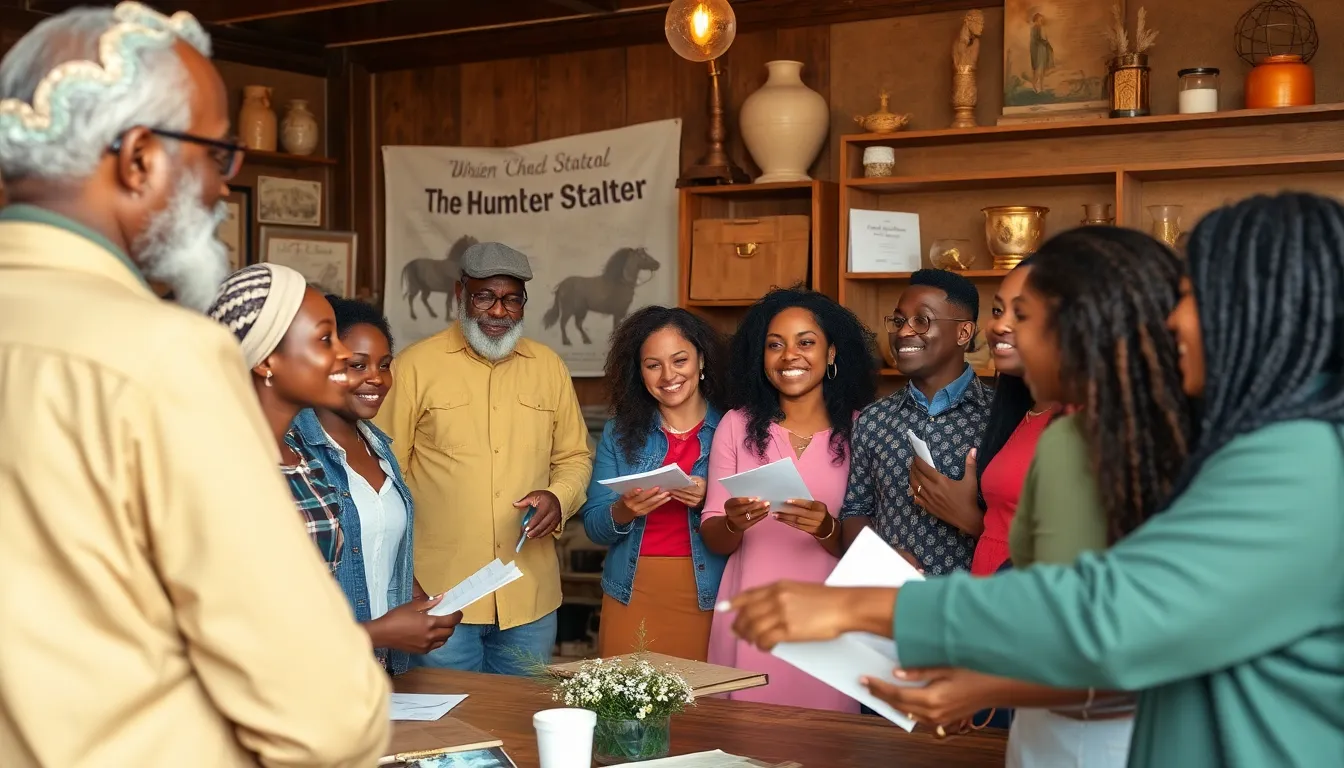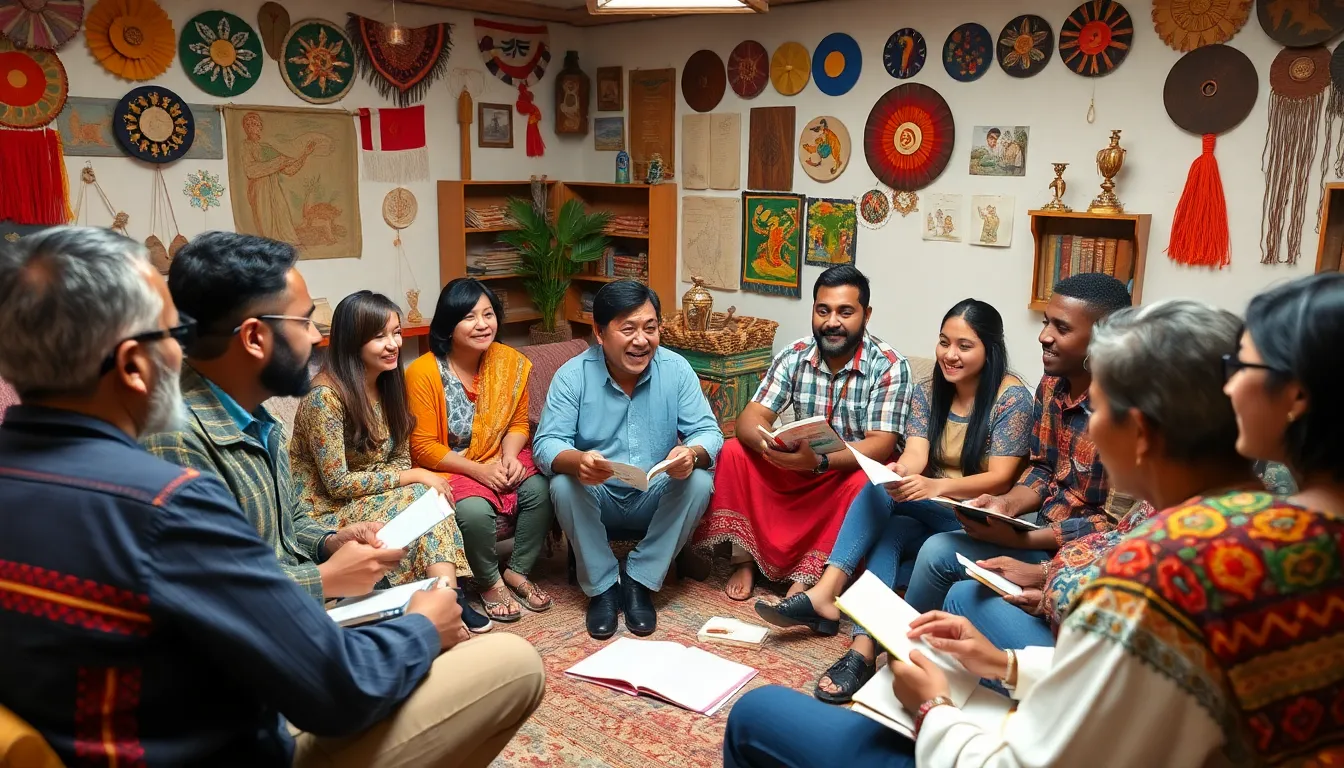Kambhistories might sound like a quirky new trend in the world of storytelling, but it’s actually a fascinating dive into the rich tapestry of culture and tradition. Imagine a blend of captivating tales and vibrant histories that transport readers to places they’ve never been, all while keeping them thoroughly entertained. It’s like binge-watching your favorite series but with the added bonus of learning something new!
Table of Contents
ToggleOverview of Kambhistories
Kambhistories offer a rich blend of storytelling, culture, and history. These narratives create immersive experiences that draw readers into different worlds. Engaging themes often reflect significant cultural events and historical contexts, making the content both enjoyable and informative.
Readers discover unfamiliar customs and traditions through these compelling tales. Cultural elements provide depth and relevance, enhancing the overall narrative. Each Kambhistory presents an opportunity to explore diverse perspectives and insights.
Information is conveyed in a manner that sparks curiosity and encourages exploration. This storytelling approach fosters a connection between readers and the subjects explored. The format often incorporates relatable characters and vivid settings, strengthening the impact of the stories.
Educational value is a key feature of Kambhistories. They illuminate historical events while entertaining the audience, allowing readers to learn without feeling overwhelmed. With a focus on clarity, each narrative unfolds in a straightforward manner, ensuring accessibility for all audiences.
Community involvement often shapes these narratives. Collaboration among storytellers, historians, and cultural experts ensures authenticity and richness in the content. Overall, Kambhistories stand out as an innovative means of cultural expression, blending history with contemporary storytelling trends.
Key Features of Kambhistories

Kambhistories showcase a variety of unique elements that contribute to their appeal. One standout aspect involves detailed documentation methods that enhance the narrative experience.
Documentation Methods
Thorough research forms the foundation of each Kambhistory. Storytellers gather historical facts, cultural insights, and personal accounts to create authentic narratives. Archival materials often serve as critical resources, providing context and richness to the stories. Stories may derive from interviews with local historians, enriching character development. Various multimedia formats, including text, images, and video, help convey intricate details and engage audiences effectively. Emotional connections arise from the depth of information presented, making the storytelling process both educational and immersive.
Community Involvement
Collaboration among community members is vital. Storytellers, historians, and cultural experts come together to ensure accuracy and represent diverse perspectives. Workshops and storytelling sessions foster participation, encouraging local voices to share experiences. Feedback from the community shapes narrative direction and authenticity, driving the development of Kambhistories. Networking with cultural organizations strengthens connections, allowing broader outreach and engagement. This collective effort not only enriches the content but also builds a sense of ownership within the community, promoting cultural pride and preservation.
The Impact of Kambhistories
Kambhistories significantly influence cultural narratives and education. They serve as conduits for preserving traditions and sharing knowledge.
Cultural Preservation
Cultural preservation thrives through Kambhistories. Each narrative encapsulates unique customs and practices, enabling communities to maintain their heritage. Engaging stories create connections between generations. Communities experience renewed interest in folklore and traditions. These stories honor local histories, emphasizing the significance of cultural identity. By documenting experiences, storytellers capture the richness of community life. The portrayal of diverse cultural perspectives fosters appreciation among audiences. As communities share their stories, they strengthen cultural bonds and promote pride.
Educational Benefits
Educational benefits arise from the immersive nature of Kambhistories. Readers encounter historical events through relatable characters and engaging narratives. Learning becomes enjoyable when history intertwines with captivating storytelling. Educators utilize these narratives to introduce complex topics, making them accessible. Curiosity is sparked, encouraging further exploration of history and culture. Kambhistories motivate discussions, prompting learners to think critically about their own backgrounds. Collaborative storytelling workshops also enhance learning experiences. These interactions provide a platform for sharing knowledge and overcoming cultural barriers.
Challenges Faced by Kambhistories
Kambhistories encounter several obstacles during their development and dissemination. One challenge lies in authentic representation. Storytellers must ensure that cultural narratives reflect genuine community voices while avoiding cultural appropriation.
Another significant issue involves audience engagement. Capturing interest in diverse stories often proves difficult, especially when facing audiences conditioned to mainstream narratives. Overcoming this requires innovative strategies to connect with potential readers.
Research requirements also pose challenges. Extensive historical and cultural research demands time and resources, which can strain smaller storytelling communities. Accessing archival materials or collaborating with experts adds complexity to the process.
Technological barriers can hinder dissemination efforts. Some regions lack the necessary infrastructure for multimedia formats. Additionally, storytellers must navigate varying levels of digital literacy among audiences, which impacts reach and engagement.
Competition with other content formats presents another hurdle. Kambhistories find themselves competing against films, podcasts, and game-based narratives that capture attention. To stand out, storytellers must continually innovate and leverage unique aspects of Kambhistories.
Community involvement tends to fluctuate. While workshops provide platforms for sharing experiences, securing consistent participation can be challenging. Fostering ongoing engagement within the community is essential for sustaining Kambhistories.
Finally, financial constraints can limit storytelling initiatives. Funding opportunities may be scarce, impacting the ability to conduct thorough research or produce high-quality content. Sustainable support structures are vital for the long-term success of Kambhistories.
Future of Kambhistories
Kambhistories are set to evolve as more communities recognize their value. Increased collaboration among storytellers, historians, and cultural experts enhances the authenticity of each narrative. Technological advancements will facilitate broader access, enabling storytelling to reach diverse audiences.
The educational realm will likely experience significant changes. Schools may integrate Kambhistories into curricula, promoting history through engaging narratives. Creative workshops could become commonplace, allowing students to explore their cultural heritage while developing storytelling skills.
Innovative funding solutions can address financial constraints faced by smaller storytelling communities. Grants and sponsorship from cultural organizations may support projects that promote local histories. Community-driven initiatives can foster greater involvement, ensuring diverse voices contribute to the narrative landscape.
Engagement strategies will also adapt, helping storytellers connect with audiences more effectively. Utilizing social media platforms can attract younger generations, sparking interest in historical content. Podcasts and video series might complement Kambhistories, creating multimedia experiences that captivate wider audiences.
Flexibility will play a crucial role in sustaining Kambhistories. Adjusting methods and techniques in response to feedback from participants ensures relevance and resonance. Continuous research and documentation will remain essential for preserving accuracy and depth in storytelling.
As challenges persist, proactive solutions will emerge to maintain momentum. Addressing concerns about cultural appropriation fosters authentic representation among communities. Establishing networks for resource sharing can strengthen collaboration, ensuring Kambhistories thrive.
The future of Kambhistories hinges on innovation, collaboration, and adaptability. Each aspect contributes to the sustainability of storytelling that honors cultural legacies while educating and engaging audiences.
Kambhistories represent a vibrant fusion of storytelling and cultural education. They not only entertain but also enlighten audiences about diverse traditions and histories. As communities continue to embrace this trend, the potential for growth and innovation is immense.
By fostering collaboration among storytellers and cultural experts, Kambhistories can thrive and adapt to modern audiences. The ongoing commitment to authenticity and engagement will ensure these narratives resonate deeply, preserving cultural identities for future generations.
With the right support and resources, Kambhistories will undoubtedly play a crucial role in enriching the cultural landscape while making history accessible and enjoyable for all.




